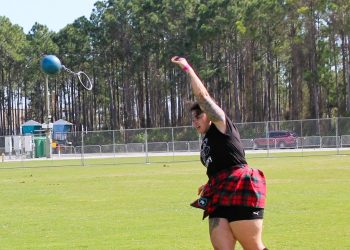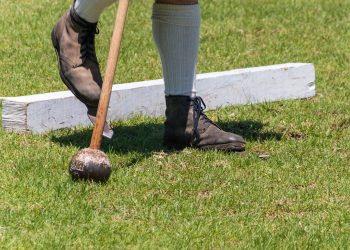Highland Games Registration

athletic CLASSES
Each Games has multiple Amateur classes to separate the different levels of ability. These divisions are as follows:
“A” CLASS
This division is for the more experienced throwers. Some of these athletes are trying to improve to possibly one day compete with the pros.
“B” CLASS
This division is for the less experienced throwers who are trying to improve to move up to the A Division.
MASTER’S CLASS
This class is for any throwers of ages 40 and up.
WOMEN’S CLASS
This division is for women who would like to compete in the Highland Games. There is only the one division as of now in the South but could be expanded as more women decide to compete.
festival Games

“Open” Stone Throw
Similar to the modern-day shot put, except a stone is used that weighs usually between 16 and 22 pounds for men and 8 pounds for women. It is called “open” style because any style of putting is allowed with the spin and glide styles being the most popular. The contestants are judged on the longest of three tosses.

Light Weight for Distance Throws (LWFD):
In the LWFD throws, the athletes are throwing for distance, using metal weights with a chain and handle attached. The weight is thrown one-handed from behind the “trig” toe board with a nine-foot run up allowed. Any style may be used, but the most popular and efficient is to spin like a discus thrower. The contestants are judged on the longest of three tosses. The athlete must remain standing after throwing the weight. A, B and Master’s Division athletes throw a 28-pound weight and the Women’s Division throw a 14-pound weight.

Heavy Weight for Distance Throws (HWFD)
In the HWFD throws, the athletes are throwing for distance, using metal weights with a chain and handle attached. The weight is thrown one-handed from behind the “trig” or toe board with a nine-foot run up allowed. Any style may be used, but the most popular and efficient is to spin like a discus thrower. The contestants are judged on the longest of three tosses. The athlete must remain standing after throwing the weight. A and B Division athletes throw a 56-pound weight, Masters Division athletes throw a 42-pound weight, and the Women’s Division throw a 28-pound weight.

Weight Over Bar (WOB):
The WOB is tossed for height over a horizontal bar between standards. After all attempts, the bar is raised in one – foot increments until only one or two athletes remain and then the bar is raised at agreed upon increments. The continually rising bar reduces the field as the competition continues until all but one athlete is eliminated. A and B Division athletes throw a 56-pound weight, Masters Division athletes throw a 42-pound weight, and the Women’s Division throw a 28-pound weight.

The Scottish Heavy Hammer
The Scottish Hammer is a rounded metal hammer with a shaft for distance. The athlete throws the hammer with his back to the “trig’ and the throwing area. The competitor’s feet may not move until after they release the hammer. Some athletes use spikes on the end of their shoes to anchor them to the ground. Each athlete gets three throws with the hammer and is judged by his best distance. Touching the top of the “trig’ or the ground in front of it renders the throw foul. A and B Division athletes throw a 22-pound hammer, Masters Division athletes throw a 16-pound hammer, and the Women’s Division throw a 16-pound hammer.

The Caber
The centerpiece of the modern highland games, the Caber requires strength, balance and timing. The caber is a long section of tree trunk with a natural taper so that it is noticeably smaller at one end than the other. The pole is 16 to 22 feet long and weighs between 65 and 140 lbs. The competitor must balance the pole against their shoulder with the small end cradled in their hands and the large end in the air so that the pole is vertical. Then they must run and allow the pole to begin to fall forward. At the right time, they must stop their sprint and flip the small end up. If the Caber is flipped the score is based upon the face of a clock, with a perfect score being 12 O’clock.

The Sheaf Toss
Using a three-tined pitchfork the athletes hurl a burlap bag stuffed with rope over a horizontal bar between two standards. Each competitor is given three opportunities to clear the bar and each competitor that clears the bar will move on to the next height to be attempted. After three attempts, the bar is raised in two-foot increments until one or two athletes remain and then the bar is raised at agreed upon increments. The continually rising bar reduces the field as the competition continues until all but one athlete is eliminated. A, B and Master’s Division athletes throw a 16- or 20-pound sheaf and the Women’s Division throw a 12-pound sheaf.
A BRIEF HISTORY
OF THE SCOTTISH GAMES
Scottish men have tested their strength against each other at Highland gatherings for centuries. King Malcolm Ceanmore, who began his reign in 1057, is credited with initiating crude forms of today’s Scottish Highland Games’ athletic competition as a means of improving the abilities of his military. While the games had become festive occasions by the sixteenth century, they were still seen as a way for kings and chiefs to choose the best men for their retinues.
Today’s Scottish Highland Games athlete combines strength, skill and endurance to compete in these time-honored events. In the spirit of the affable Scot, these competitors combine the attributes of the athlete with the fellowship of clansmen to promote and perpetrate the heart of the Scottish Festival and the Highland Games.
